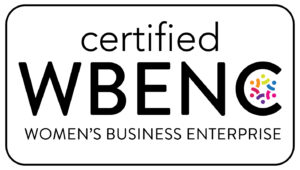Empowerment as a leader is more than a buzzword; it’s a transformative strategy for inspiring peak performance in your team. In this article, you’ll uncover what empowerment truly entails and how to implement it, from promoting autonomy to fostering innovation. We’ll guide you through the core of empowering leadership, demonstrating its impact on trust, decision-making, and organizational culture. Prepare to unlock the potential of your team through the power of true empowerment.
Key Takeaways
Empowering leadership is centered around sharing authority, fostering emotional intelligence (EQ) over traditional IQ-focused approaches, creating an environment that encourages team member autonomy, and actively involving employees in decision-making processes to enhance engagement and company performance.
Creating an empowered work environment involves building trust through less direct supervision and more self-management, facilitating transparent communication, and providing resources that support autonomous and efficient work by employees, leading to increased ownership and a positive work culture.
Effective leaders play a direct role in the career development of their teams by offering mentorship and coaching, creating opportunities for growth and learning, and ensuring that decision-making and innovation are encouraged and rewarded within the organization.
The Essence of Empowering Leadership

Empowering leadership is a philosophy that redefines the traditional dynamics of power in the workplace. It acknowledges that power is not a fixed quantity—leaders can actually gain influence by sharing it and acting as agents of change. This empowering leadership style emphasizes:
Autonomy and the development of team members
Shifting the focus from an IQ-centric approach to one that prioritizes emotional intelligence (EQ)
Inspiring teams to strive for excellence and adapt to the ever-changing organizational landscape
An empowered leader, acting as a team leader, empowers their teams by cultivating an environment where employees feel empowered, thus practicing empowered leadership and empowering employees.
The principles of empowering leadership involve:
Relinquishing formal power to some extent, which can make leaders more vulnerable but simultaneously more accountable for team outcomes
Setting a clear vision that fosters collective commitment to common goals and translating that vision into measurable outcomes
Valuing the perspectives of team members and including them in decision-making processes
Motivating team members to deliver their best performance
Leaders that adopt this style of leadership empower their team and create a positive and productive work environment.
Empowering leaders:
Are adaptive
Continuously learn from feedback
Adjust their approach to meet individual and situational needs
Foster an environment where employees are engaged in their work and committed to the organization’s success
Inspire and motivate team members
Cultivating an Empowered Work Environment

Cultivating an empowered work environment goes beyond mere delegation of tasks; it involves fostering a culture where employees feel valued and supported. Leaders who exemplify the values, behaviors, and attitudes they expect from their team members set the foundation for a positive and productive work culture. Prioritizing employee well-being and work-life balance, recognizing and rewarding contributions, and promoting diversity and inclusion are key elements in this approach. Strengthening this culture involves effective communication and provision of necessary resources, which ensures employees feel empowered to deliver their best performance.
Empowerment strategies must be consistently applied to maintain trust and ensure that employees feel their autonomy is dependable and not arbitrarily revoked. Involving employees in special projects and decision-making processes can further enhance their sense of belonging and empowerment. The specifics of cultivating an empowered work environment will be examined more closely, with a focus on building trust, facilitating open communication, and providing resources and support.
Building Trust with Team Members
Trust is the cornerstone of empowerment. It inspires employees to take ownership of their work and strive for excellence. Empowering leadership encourages self-management rather than direct supervision, which fosters trust by allocating various tasks and responsibilities to team members. This approach not only builds confidence but also allows employees to learn from both successes and failures.
Servant leadership plays a crucial role in building a trusting organizational culture. By prioritizing the needs of team members and encouraging them to make decisions independently, leaders create an environment where employees feel secure and more engaged in their roles. This trust leads to higher employee engagement and a more positive work environment, ultimately contributing to long-term success.
Facilitating Open Communication
Effective communication and transparency are central to building trust among team members. When leaders are open and inclusive in their dialogues, they enable access to shared knowledge resources and foster collaboration. Cultivating a culture that values open communication ties directly into balancing autonomy with accountability, embedding team involvement in decision-making processes. This approach ensures that team members feel heard and valued, which contributes to a dynamic and engaging workplace.
Empowering leaders actively encourage their team members to express their opinions, share experiences, and make suggestions. This not only promotes a sense of ownership but also drives continuous improvement and innovation. Maintaining effective communication involves a balanced approach to acknowledging team members’ strengths while constructively addressing areas for improvement, which is essential for fostering a feedback culture and ensuring continuous growth.
Providing Resources and Support
Leaders empower employees by setting clear goals, offering guidance, and ensuring access to necessary resources and tools. When employees understand the significance of their work and see how it contributes to the bigger picture, they feel more connected and motivated.
The provision of resources and support is vital for enabling team members to work autonomously and effectively, reinforcing their empowerment and commitment as a team member to the organization’s mission.
The Leader’s Role in Career Development

Empowering leaders play a pivotal role in the career development of their team members. This is done by:
Delegating tasks that develop skills
Conducting one-on-one sessions to navigate career challenges
Providing performance evaluations and personalized development plans
Helping employees gain awareness of their strengths and weaknesses
Setting the stage for targeted improvement and skill enhancement
This proactive approach not only benefits the individuals but also contributes to the overall success of the organization by building a more capable and motivated workforce.
Acquisition of job-specific skills and the enhancement of soft skills such as leadership, communication, and problem-solving are critical for career development. Leaders who practice servant leadership serve as role models and actively support their team members, nurturing potential future leaders. The aspects of mentorship and coaching, along with creating opportunities for growth, will be further explored.
Mentorship and Coaching
Leadership development programs that incorporate coaching and mentoring can significantly improve performance, increase employee engagement, and develop essential leadership skills. Leaders who act as career coaches aid employees in exploring self-discovery and formulating strategies to achieve their professional aspirations. This personalized guidance helps employees navigate their career paths more effectively and reach their goals.
Promoting cross-training, providing access to industry conferences, and incentivizing creative input are methods to empower employees and encourage their continued professional growth. Mentorship programs, which pair new employees with experienced staff, facilitate effective integration into the company culture and ensure knowledge is shared. These efforts collectively contribute to a more empowered and skilled workforce.
Creating Opportunities for Growth
Leaders facilitate professional development by:
Offering relevant training
Transforming situations into opportunities for learning and growth
Involving employees in cross-functional projects to broaden their understanding of different organizational roles and enhance their skill sets
Providing exposure to help employees develop a more comprehensive view of the company and prepare them for future leadership roles.
Providing networking opportunities is another crucial aspect of career development. Leaders support employees in building vital relationships that can lead to career advancement within and beyond the organization. By creating a supportive environment for growth, leaders not only empower their teams but also ensure the long-term success and sustainability of the organization.
Decision Making and Accountability
Balancing decision-making authority and accountability is a critical aspect of empowering leadership. Leaders set clear expectations by defining goals, roles, scope, deadlines, and standards, and outlining how performance will be measured and evaluated. This clarity helps team members understand their responsibilities and the boundaries within which they operate, fostering a sense of autonomy and ownership.
To maintain accountability while empowering autonomy, leaders should:
Delegate authority
Provide the necessary resources
Trust team members to handle tasks independently
Establish boundaries to prevent overreach
Regular monitoring and coaching support this balance by tracking progress and providing constructive feedback.
Empowering leaders, including senior leaders, enhance decision-making by involving team members in higher-level company decisions, valuing their opinions, and ensuring they are equipped with the necessary skills and information.
Encouraging Independent Decision Making
Including employees in decision-making processes demonstrates respect for their expertise and trust in their ability to make appropriate judgments. Empowerment is significantly enhanced when leaders prioritize outcomes over micromanaging every step of a process, allowing employees to find their own path to the desired result. This approach not only fosters autonomy but also stimulates personal responsibility and a stronger sense of ownership of their work.
By handing over decision-making power to employees, leaders grant them the space to act independently, which in turn encourages innovation and problem-solving. This empowerment leads to higher job satisfaction and engagement, as employees feel more valued and trusted in their roles.
Establishing Clear Rules and Expectations
It is essential to set clear guidelines to help team members understand their boundaries and responsibilities. Empowering leadership involves providing guidance while clearly defining the boundaries within which team members operate.
Establishing clear objectives ensures that team autonomy is exercised effectively and does not result in confusion or lack of direction.
Encouraging Innovation and Problem-Solving

Empowering leadership fosters a culture of innovation and creativity by:
Encouraging critical thinking
Encouraging risk-taking
Giving employees autonomy to explore new ideas
Instilling self-belief to take risks
Increasing intrinsic motivation and innovation
Removing organizational constraints
Providing diverse alternatives for exploration
This is particularly effective in stimulating creativity among newcomers to the organization.
Involving employees in decision-making processes and valuing their unique perspectives further enhances their sense of empowerment and drives continuous improvement. Leaders who focus on empowerment excel at problem-solving by identifying and removing roadblocks to team success. The ways in which rewarding creative ideas and facilitating constructive feedback contribute to this innovative culture will be further examined.
Rewarding Creative Ideas
Financial incentives such as gift cards, upgrading office products, or covering the cost of personal and professional development courses are effective ways to reward employee innovation. Practical rewards like subscriptions to music streaming services, company swag, and office plants can also recognize and encourage creative ideas in the workplace. These rewards not only provide tangible recognition but also reinforce the value of innovation within the organization.
Unique experiences, such as memberships to local museums, event tickets, or physical activities like pottery and cooking classes, can serve as incentives for employees to innovate. Personalized recognition, including a note from the CEO or a feature in the company newsletter, can be a meaningful way of rewarding employees for their creative contributions. These efforts collectively foster a positive work environment and encourage continuous innovation.
Facilitating Constructive Feedback
Leadership that cultivates a culture of ongoing improvement:
Provides regular feedback
Acknowledges employee contributions
Gives specific feedback on behaviors rather than personal traits
Provides guidance for positive change
Prepares constructive feedback with a clear focus on desired outcomes and improvements
This approach ensures that employees receive the support they need to grow and develop, contributing to their overall job satisfaction and engagement.
Empowerment Through Servant Leadership
Servant leadership is grounded in a dedication to empowering others and a true desire to be of help. This leadership approach involves prioritizing the needs of team members and stakeholders to inspire higher performance levels. By adopting the roles of:
Visionary
Architect
Coach
Catalyst
Leaders can create an environment where employees feel supported and motivated to excel.
Empowering leadership through servant leadership means:
Leading by example
Showing genuine care for the well-being and development of team members
Fostering a strong sense of community and trust within the organization
Ultimately leading to higher employee engagement and better organizational outcomes.
The Impact of Empowering Leadership on Organizational Culture

Empowering leadership enhances employee engagement by fostering a sense of belonging and community within the organization. Empowered employees are more agile, adaptable, and innovative, which contributes to heightened organizational performance. In tech businesses, empowerment is essential as it fosters a culture of innovation which, in turn, drives employee engagement and business growth.
Providing empowerment through support and understanding the significance of employees’ work plays a critical role in retaining talent. When employees feel their contributions are valued and see how their work impacts the organization, they are more likely to:
Stay engaged and committed
Take ownership of their work
Be motivated to perform at their best
Contribute innovative ideas
Collaborate effectively with colleagues
Stay loyal to the organization
This ultimately leads to positive business results.
Achieving Balance: Avoiding Over-Empowerment
Excessive empowering leadership can lead to diminishing or negative performance returns due to an overemphasis on autonomy. When over-empowerment occurs, managers may seem indecisive, and employees may feel left out, impeding the intended results of the empowerment strategy. Certain management-level decisions, particularly actions related to an employee’s poor performance, are not suitable for delegation as they can reflect indecisiveness in the leadership.
Empowerment should be aligned with employees’ readiness and willingness to handle the added responsibility. Forced empowerment may clash with their abilities or desires, leading to frustration and decreased performance. Leaders must carefully assess their team’s capabilities and provide the right level of support to ensure effective empowerment.
Empowerment Seminars: A Tool for Enhancing Leadership Skills
Empowerment Seminars are events aimed at reinforcing leadership abilities and can include various activities that challenge and engage participants. These seminars are designed to facilitate self-empowerment and transformation, aiding individuals and organizations in their development journeys. Activities offered in Empowerment Seminars encompass ‘Breaking Barriers’ Board Breaking, ‘Step Into Your Power’ Arrow Breaking, and Firewalking, among others.
These activities not only provide a physical challenge but also symbolize overcoming personal and professional barriers. Participants learn valuable lessons about commitment, cooperation, and mental focus, which they can apply to their leadership roles. Two specific activities, “Breaking Barriers” Board Breaking and Firewalking, will be examined in more detail.
“Breaking Barriers” Board Breaking
In Board Breaking sessions, participants underscore their commitment to personal and team goals by writing them on boards and then physically breaking the boards to symbolize the overcoming of challenges and achievement of breakthroughs. This powerful team-building activity concludes events on a high note, instilling motivation and leaving a lasting impression on participants.
The board breaking activity is designed to cater to a wide range of group sizes, from small workshops to large corporate events, demonstrating its flexibility and scalability. This activity not only promotes a sense of accomplishment but also reinforces the importance of setting and achieving goals within the team.
Firewalking
Firewalking is an activity that represents the power of overcoming fears and the importance of mindset, which can be transformative experiences for leaders. This activity underscores the power of the mind and thoughts in overcoming challenges. Leaders learn to confront challenges with a resilient mindset through the transformative experience of walking on fire.
The purpose of the firewalking activity is to face fear head-on and realize the power of the mind in overcoming obstacles. By participating in firewalking, leaders can inspire their teams to adopt a similar resilient mindset, encouraging them to tackle challenges with confidence and determination.
Summary
Empowering leadership is a transformative approach that redefines the traditional dynamics of power in the workplace. By fostering autonomy, development, and emotional intelligence, leaders can inspire their teams to achieve their best and adapt to the ever-changing organizational landscape. Building trust, facilitating open communication, and providing resources and support are crucial elements in creating an empowered work environment.
Leaders play a pivotal role in career development, decision-making, and fostering innovation. By balancing autonomy with accountability and avoiding over-empowerment, leaders can ensure their teams are motivated, engaged, and equipped to drive success. Empowerment Seminars provide valuable tools for enhancing leadership skills, reinforcing the principles of empowering leadership. By embracing these strategies, leaders can create a positive, productive, and innovative organizational culture.
Frequently Asked Questions
What is empowering leadership?
Empowering leadership is a philosophy that fosters autonomy and development among team members, emphasizing emotional intelligence and collective commitment to goals. It shifts focus from traditional power dynamics.
How can leaders build trust with their team members?
By encouraging self-management, allowing ownership of work, and practicing servant leadership, leaders can build trust with their team members effectively. These actions create a positive and trusting organizational culture.
What activities are included in Empowerment Seminars?
Empowerment Seminars include activities like ‘Breaking Barriers’ Board Breaking, ‘Step Into Your Power’ Arrow Breaking, and Firewalking, among others, to foster leadership skills and encourage personal growth.
How do leaders balance autonomy and accountability?
Leaders balance autonomy and accountability by setting clear expectations, delegating authority, providing resources, and regularly monitoring and coaching team members to empower them while maintaining accountability (Date not included).
What is the impact of empowering leadership on organizational culture?
Empowering leadership has a positive impact on organizational culture by enhancing employee engagement, agility, innovation, and fostering a sense of belonging and community within the organization, which leads to positive business results and better talent retention.



